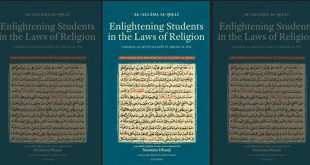This paper examines how contemporary Shiʿi scholars of rijāl deal with problematic isnāds through engaging in a thorough examination of the isnād patterns.
It focuses on a sample model that has been undertaken to identify an informant of the renowned Shiʿi hadith collector Abū Jaʿfar Muḥammad ibn Yaʿqūb ibn Isḥāq al-Kulaynī (329/941), recorded in his magnum opus, al-Kāfī fī ʿIlm al-Dīn. Upon identifying the problem through examining the variants of the tradition, the paper then tries to ascertain the identity of the problematic reporter in the sanad by first looking into classical rijāl works such as those written by Muḥammad ibn ʿAbd Allāh al-Asadī al-Najāshī (d. 450/1058) and Muḥammad ibn al-Ḥasan al-Ṭūsī (385/996-460/1067). After exhausting these classical sources, it examines how the more recent prominent Shiʿi scholars of rijāl, such as Ḥusayn ibn Muḥammad Taqī Nurī al-Ṭabarsī (d. 1902), Sayyid Ḥusayn Ṭabāṭabāʾī Borūjerdī (d. 1961), Ayatollah al-Sayyid Mūsā al-Shubayirī al-Zanjānī, and Ayatollah Muḥammad Āṣif al-Muḥsinī deal with the issue. Finally, the paper undertakes an additional study of the isnād patterns mentioned in al-Kāfī in order to assess the findings of Shiʿi scholars of rijāl.
Bibliographic Information
Title: Use of Transmission Patterns in Contemporary Shiʿi Isnād Analysis
Author: Seyfeddin Kara
Published in: Journal of Shi’a Islamic Studies, Volume 9, Number 2, Spring 2016
Language: English
Length: 21 pages
 Use of Transmission Patterns in Contemporary Shiʿi Isnād Analysis
Use of Transmission Patterns in Contemporary Shiʿi Isnād Analysis
 Ijtihad Network Being Wise and Faithful Muslim in the Contemporary World
Ijtihad Network Being Wise and Faithful Muslim in the Contemporary World
